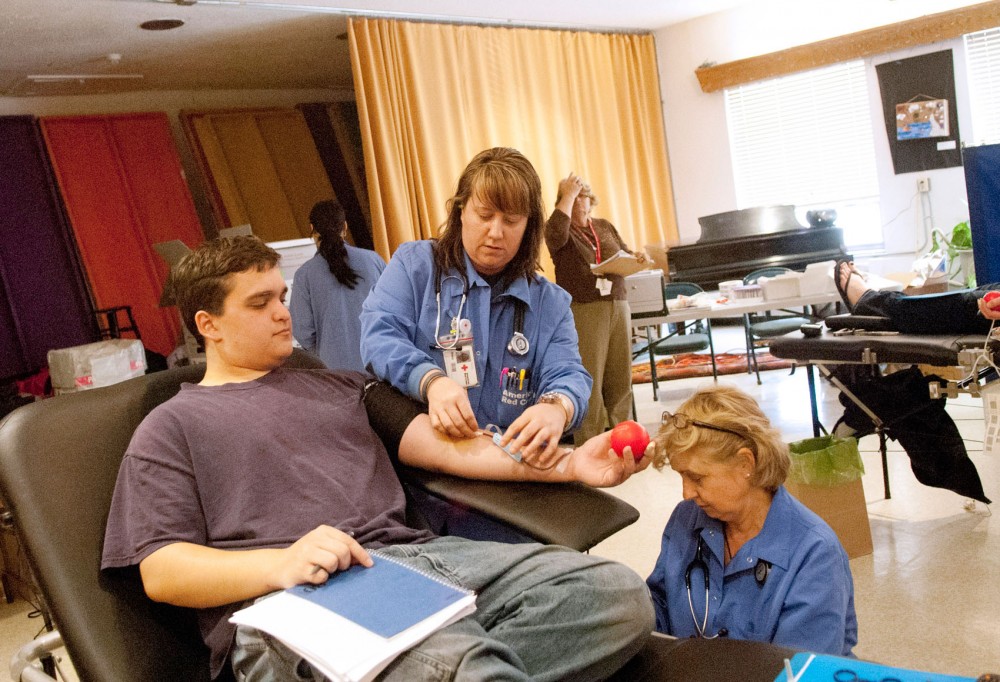Blue lab coats, red squeeze balls and plastic tubes filled the main room of Hillel: the Jewish Student Center.
Alpha Epsilon Pi ran a blood drive Tuesday as part of the fraternity’s effort to hold events focused on philanthropy. The day-long event is in its second year and produced 36 whole-blood donations, well above the 25-donation goal set by the American Red Cross.
Yosef Amrami, a psychology junior who organized the event, said blood donation drives are not common on campus but can be more powerful than fundraisers.
“You know where your efforts are going,” he said. “You know that it is going to benefit someone’s life.”
Dallas Kester, a collection technician for the Red Cross, said nearly 80 percent of blood donations come from mobile sites like the one at Hillel. She said there are only three fixed locations in the Twin Cities because “a lot of people say they wouldn’t donate blood if we didn’t come to them.”
For Erin Cowles, a geography senior, it came down to convenience.
“I was walking down the street and saw the sign out front,” she said. “I hadn’t donated in a while but my schedule worked out.”
The University of Minnesota campus is large enough, and students are relatively healthy, Cowles said, so finding enough people to donate shouldn’t be a problem.
“It’s not that painful and doesn’t take much time, but in the end, it’s worth it to help save a life,” Cowles said.
The local Red Cross holds drives at about a dozen fraternities and sororities each year, said Ian Birdsall, a collection technician. Smaller locations like Hillel are expected to receive 25 donations while larger drives, like the ones held at Coffman Union during Homecoming Week and Spring Jam, expect 200 donations, he said.
Donors first registered by recording their name and swiping their donor ID card. They read over informational materials and answered questions from the Red Cross before donating.
To be eligible, donors must have an iron level of 12.5 or higher, Kester said. Those under 19 years old must also meet height and weight requirements.
Once on the table, she said the process of giving a pint of blood only takes about six to 10 minutes.
The Red Cross tells donors to wear a bandage for at least four hours on the arm where the needle was placed. Donors are eligible to give every eight weeks.
Once a bag is collected, it must be processed within 16 hours, Birdsall said. The blood is transfused and separated before being used by hospitals.
The event has personal ties for many.
Amrami said he volunteered to organize the event because his aunt and uncle died of leukemia.
Marina Budilovsky donated because a family member had a medical need that required the use of
donated blood.
“Usually when you donate you just see the bags and don’t know where your blood goes,” she said. “But when it’s your family member, you see the other end.”
An idea for a Red Cross-affiliated student group on campus is being discussed, Amrami said. Many Big Ten schools already have Red Cross clubs.
The fraternity hopes to build upon the event’s success in future years.
“We want to shoot for over 50 donations next drive,” said Andy Stone, a mechanical engineering junior. “Everybody has blood. Not everyone has money.”








